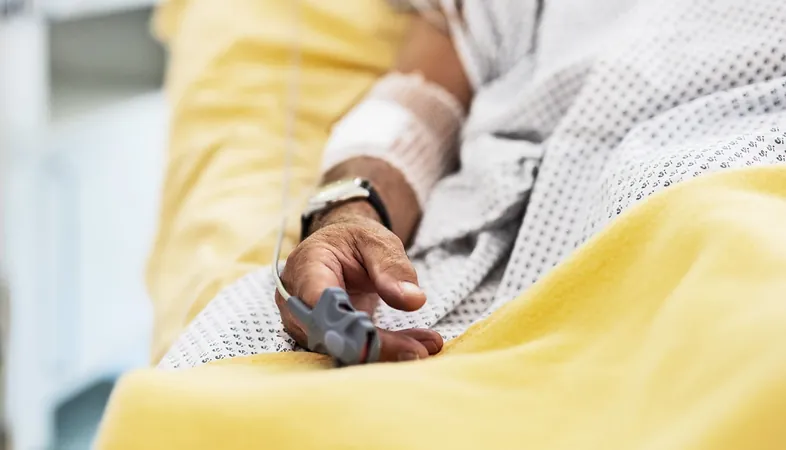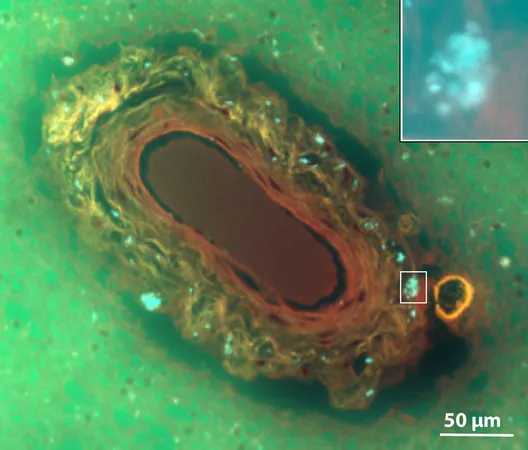
Revolutionary AI Tool Uncovers Hidden Consciousness in Brain-Injured Patients
2025-09-22
Author: Siti
A groundbreaking study has unveiled cutting-edge artificial intelligence (AI) technology capable of detecting covert consciousness in patients who have suffered severe brain injuries. This advancement could significantly enhance personalized care strategies in hospitals and rehabilitation centers.
Unlocking the Mystery of ‘Unresponsive’ Patients
Every year, countless patients in the U.S. are deemed "unresponsive" following brain injuries. However, this new research indicates that as many as 25% of these individuals may actually be conscious but unable to express it. This phenomenon, termed cognitive motor dissociation (CMD), highlights a critical gap in diagnosis within neurology and critical care.
Meet SeeMe: The AI Game-Changer
To tackle this pressing issue, researchers Mofakham and Mikell developed an innovative AI tool called SeeMe. This pioneering technology analyzes tiny, often imperceptible, facial movements to detect signs of awareness, potentially identifying subtle responses up to eight days ahead of conventional clinical assessments.
Confronting the Wrong Diagnosis
Their study aligns with a striking 2024 analysis published in The New England Journal of Medicine, which revealed that 15-25% of patients falsely labeled as unresponsive may actually retain significant brain function. Misdiagnosis can severely delay crucial treatments and rehabilitation interventions.
Bridging the Communication Gap
Mofakham, a senior author of the study and a prominent figure in the neuroscience field, emphasizes, "Just because someone can’t move or speak doesn’t mean they lack consciousness. Our tool reveals their attempts to communicate." In trials involving 37 patients in comas, SeeMe effectively tracked involuntary facial reactions to verbal cues, marking detectable movements days before healthcare professionals observed them.
Transforming Patient Prognosis
This innovative work not only serves as a diagnostic tool but may also provide invaluable prognostic insights. According to Mikell, a neurosurgeon and co-leader of the study, families often grapple with unsettling questions about their loved ones' recovery timelines. The predictive capabilities of SeeMe could revolutionize how families and medical staff navigate these concerns.
Ethical Implications and Accessibility
The ethical ramifications of misdiagnosing unresponsive patients are profound, potentially resulting in the withdrawal of life-saving care and imperiling access to vital rehabilitation services. Importantly, SeeMe is designed to be non-invasive, cost-effective, and scalable, needing only a camera and open-source software—making it feasible for use even in resource-challenged settings.
Paving the Way for Future Medical Practices
As SeeMe evolves towards larger clinical trials and looks for regulatory approval, the research team envisions integrating it into regular ICU operations, paired with EEG and other monitoring technologies to create a comprehensive consciousness-assessment platform. This could give a voice to patients who have been rendered mute, showcasing the transformative potential of AI in restoring independence and dignity.
Published Research Impact
The research findings were recently published in Nature Communications Medicine, underlining the collaborative efforts of Stony Brook University's neurosurgery and electrical engineering departments, supported by various institutional seed grants.




 Brasil (PT)
Brasil (PT)
 Canada (EN)
Canada (EN)
 Chile (ES)
Chile (ES)
 Česko (CS)
Česko (CS)
 대한민국 (KO)
대한민국 (KO)
 España (ES)
España (ES)
 France (FR)
France (FR)
 Hong Kong (EN)
Hong Kong (EN)
 Italia (IT)
Italia (IT)
 日本 (JA)
日本 (JA)
 Magyarország (HU)
Magyarország (HU)
 Norge (NO)
Norge (NO)
 Polska (PL)
Polska (PL)
 Schweiz (DE)
Schweiz (DE)
 Singapore (EN)
Singapore (EN)
 Sverige (SV)
Sverige (SV)
 Suomi (FI)
Suomi (FI)
 Türkiye (TR)
Türkiye (TR)
 الإمارات العربية المتحدة (AR)
الإمارات العربية المتحدة (AR)